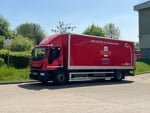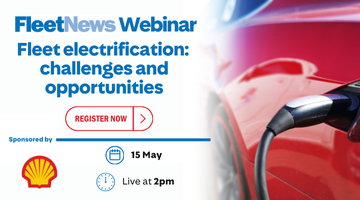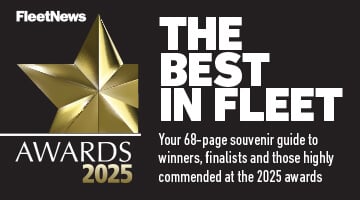16 Every crash costs you cash
Risk management is a never-ending challenge, but without fresh thinking and new strategies, the money-saving message of low accidents can fall on deaf ears, especially in a growing business.
You could start immediately with initiatives such as publicising incident rates within the business.
A no-blame culture is important to ensure everything is reported, but education is also critical to establish a long-term trend of reduced accidents and a ‘zero-harm’ culture within the business.
The impact on the bottom line can be dramatic. Avoiding one serious accident could pay for all a company’s risk management efforts in one ‘hit’.
Finally, where repair costs are incurred, ensure they are managed closely and off-road time is minimised.
For example, one fleet reduced off-road time by 1,100 days in a year and estimated it had brought savings of £286,000 through improved productivity.
Repair network ACIS says close monitoring of repair work can cut off-road times by 50% in some cases.
17 Funding: rise of the blended solution
In most fleets, funding decisions are based within the finance department, but fleet managers can play an influential role.
In the majority of cases, contract hire will prove the best option, but it isn’t a one-size fits all solution. Does it need to be on or off balance sheet? Are vehicles an employee benefit or predominantly job-need? Is staff turnover high or do you have a predictable driver base?
Contract purchase, finance lease, employee car ownership, salary sacrifice and outright purchase may all be viable options within a fleet, with each one bringing its owns financial benefits.
A spokesman for Lex Autolease says: “You may also wish to think about your short-term versus your long-term funding needs.”
18 Weed out your lazy vehicles
Lazy vehicles cost your business money, so make them work harder.
One of the most successful examples of this approach is a painstaking examination of one of the country’s biggest fleets.
The project resulted in Openreach, part of the BT Group, cutting its fleet of 24,000 vehicles by 2,000 in a single year – of which 95% were vans, with the remaining 5% cars.
It developed a diverse series of tests to identify vehicles it believed could be used more efficiently, involving close analysis of telematics, fuel, service, maintenance and repair spend and usage patterns.
Openreach saved £8-10 million in leasing costs alone in the first year and was expecting further reductions to follow.
Simple initiatives can produce substantial savings. For example, the end of ‘one man, one van’ policies are increasingly finding favour.
This is particularly popular in the commercial vehicle sector, where drivers move to sharing vehicles to suit their shift patterns, ensuring vehicles are utilised 24 hours a day.
This may be more difficult for company car fleets, but greater use of pool cars, rental and well-managed grey fleet programmes can ensure that vehicles only join the fleet when there is a clear financial benefit and an expected return on investment, such as greater efficiency or productivity.
19 Train to gain
Professional training sits at the foundation of a cost-effective fleet. According to the Chartered Institute of Personnel and Development (CIPD), 94% of executives who have taken vocational training say it has helped them do their job better.
One of the industry’s main training providers is the Institute of Car Fleet Management (ICFM).
Since its launch, the ICFM has since gone on to train more than 850 people, many of whom are Fleet News award winners.
In addition, fleet managers benefit from networking and sharing ideas, which has been the focus of the ACFO, the fleet managers’ association.
Supply chain management is becoming a more fundamental part of a fleet manager’s role.
With this in mind, consider training from procurement specialists, such as the Chartered Institute of Supply and Purchasing to give you the edge in negotiating and management.
- For more details, go to www.icfm.com or www.acfo.co.uk
20 Target the taxman
A tax-efficient fleet is a cost-effective fleet, so fleet policy and Government policy should be closely aligned in any fleet strategy.
Focus on driving down CO2 as this is the key driver of fleet taxation in the UK, for benefit-in-kind tax, Class 1A NIC and capital allowances/lease rental restrictions.
The key CO2 emission band for new acquisitions is 130g/km.
For emissions above this point, companies can claim 8% capital allowances if they purchase vehicles, but for vehicles which are at or below the target, the rate more than doubles to 18%.
This threshold also affects lease restrictions – above 130g/km and just 85% of the lease rate can be deducted from taxable profits; up to 130g/km and 100% can be deducted.
A second, tougher benchmark is the target for 100% first-year writing down allowances, which now stands at 95g/km.
Fleets also need to factor in long-term changes to BIK rates when creating their choice list to ensure they offer drivers tax-efficient vehicles.
For example, a vehicle emitting 99g/km of CO2 is currently in the 11% tax band, but by 2016/2017 it will fall into the 16% band.
The Fleet News view
Every fleet operates in a different way. Knowledge of your company’s wider business objectives is crucial before setting fleet strategy – the two need to blend together.
However, cost is at or near the top of every agenda.
Consequently, every element of fleet policy needs to be constantly scrutinised and questioned.
Maintaining the status quo will not achieve the necessary efficiencies and savings.

















surafel lulekal - 07/06/2014 20:08
good i need update information